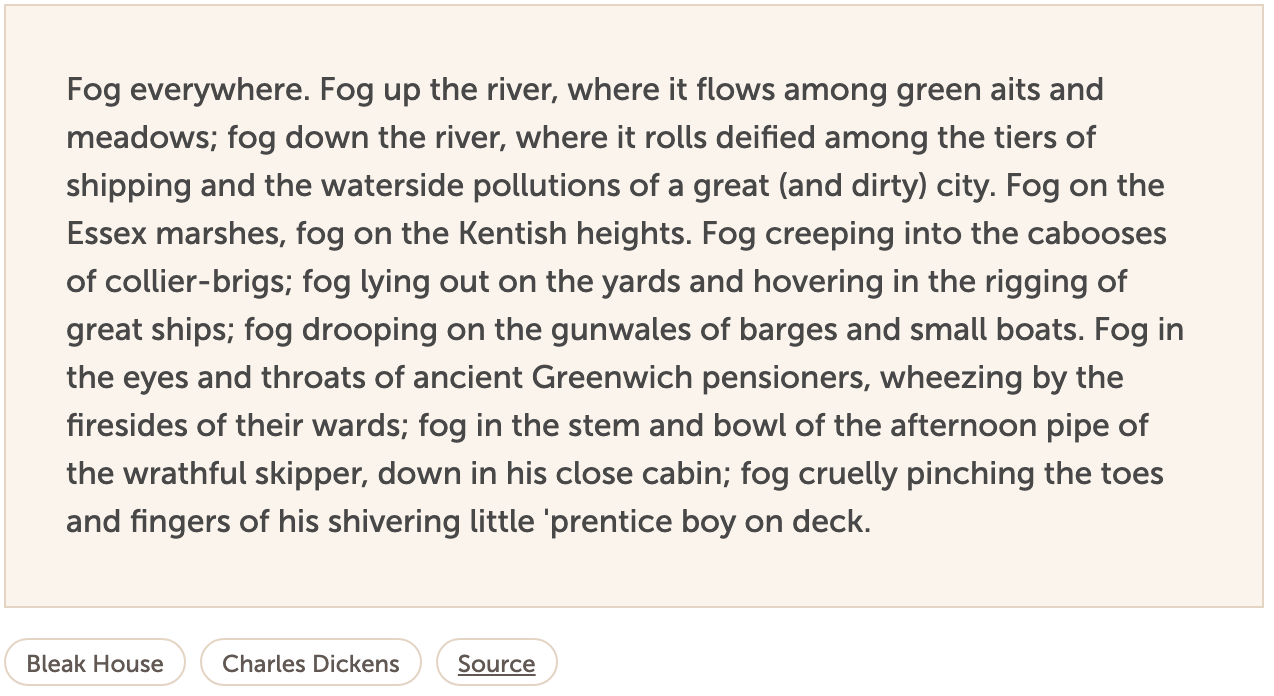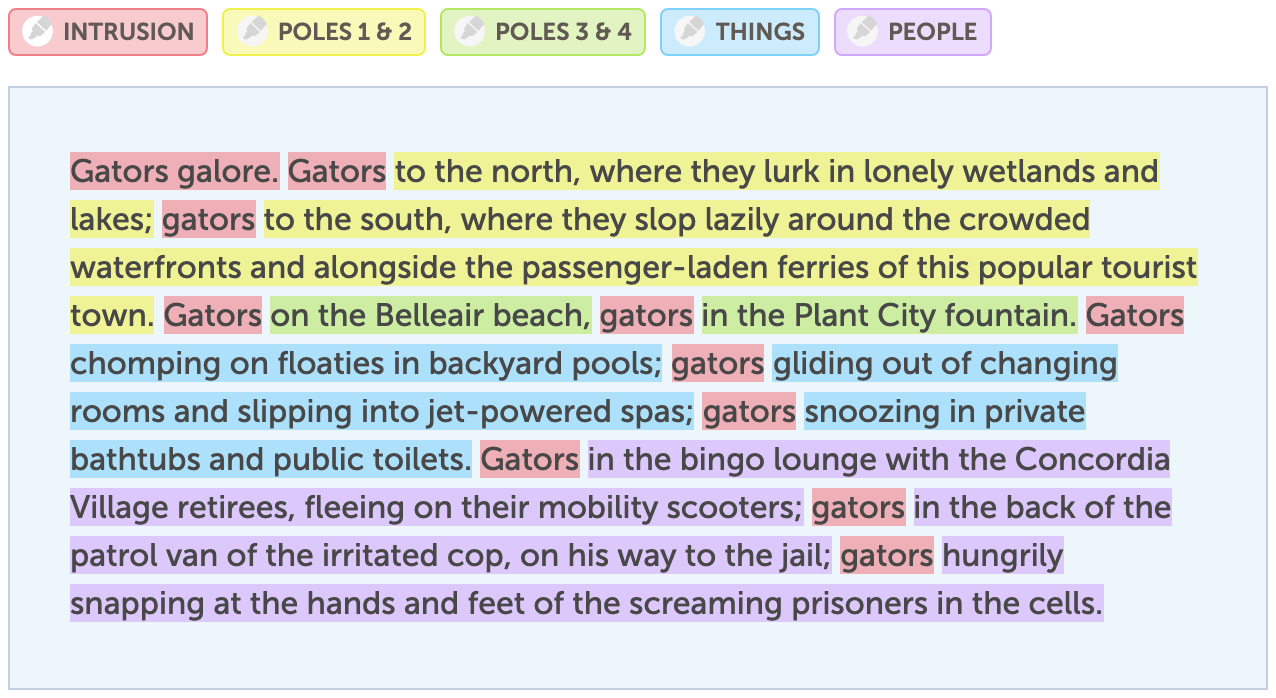"Fog everywhere."
The final (for now) instalment in our series of classic author one-shot lessons is a lesson based on the famous opening of Charles Dickens' Bleak House.
In the first few pages of Bleak House, Dickens, one of our greatest city-writers, is at the top of his game, conjuring London out of mud, fog, smoke, and legal papers:
Dickens made a distinction between his ordinary mode of writing (i.e. endless subordinate clauses) and what he called his "word pictures". This snippet is pure word picture, and it has a distinctly modern feel through its use of fragments and repetition.
Students begin by brainstorming locations (such as a city, town, building, or community) that have enough complexity to be worth a tour, plus intrusions upon which we can piggyback (such as heat, pollen, rats, or nightmares).
We then unpack the way that Dickens systematically defines different axes—upstream vs downstream, north vs south, boat sizes, ages of men—and then chooses contrasting details along each axis to show the totality of the intrusion and, incidentally, build a portrait of the world.
We end up with something like this, a worked example that follows a plague of alligators through Tampa, FL:
Along the way we learn a little bit about the geography of the greater London area, what an 'ait' is, and the etymology of gunwale (which is gun-wall).
What's this lesson good for?
This snippet shows students how they can describe an entire world in a handful of sentences.
Unlike the other Classic Authors lesson, this lesson doesn't feature a voice pass—which is in itself really interesting, because there is no special vocabulary or turns of phrase that makes this snippet distinctively Dickensian. Instead the voice is created by rhythm and repetition.
It's also a fascinating meta-lesson in the value of rewriting as a way to actively study text, because even though this is one of my favourite passages I myself had never noticed Dickens systematic use of contrasting axes until I started trying to rewrite the snippet.
You can preview the lesson here.


